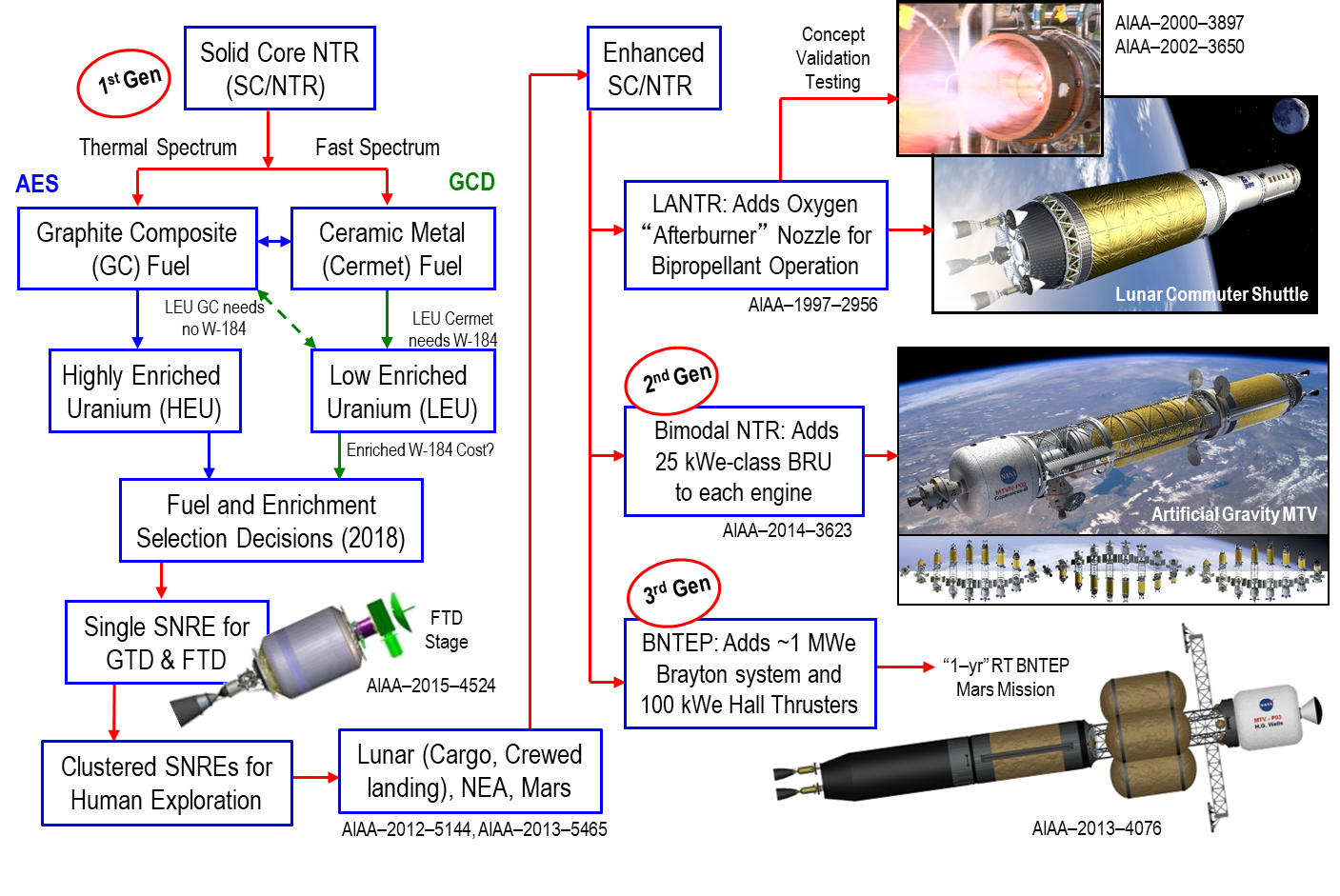Capabilities & Technology
Multiphysics Modeling, Engine and System Modeling and Mission Analysis
Multiphysics analysis of the reactor (FEA/CFD/MCNP) combines neutronics, fluid, thermal, and structural simulations all coupled together, which captures design subtleties otherwise not seen without coupling the simulations.
Numerical Propulsion System Simulation (NPSS) is an object-oriented, non-linear code originally developed at GRC in 1995 and is used to model full engine systems and integrate model details from our multiphysics analysis. Transient modeling capabilities exist with NPSS in order to model engine startup and shutdown, which is an important use case for NPSS to determine what events occur during the transient engine phases.
Mission Analysis (SIZER/Trajectory & MAMA) codes developed at GRC are utilized to size vehicle architecture, determine mission timelines, delta-V, mass predictions, and system optimization.
Materials and Testing
The NTP Materials Data Book is being developed by GRC to better understand high temperature material properties (up to 3000K) in the engine and reactor as these properties are not well understood for fuel elements, moderator elements, and cladding and many data gaps exist at the expected reactor/engine temperatures. To close these data gaps, GRC is leading the necessary thermo-mechanical testing and investigation of fuel coating architectures to reduce the potential for mid-passage corrosion due to hydrogen.
A Laser Test Rig is being developed at GRC in order to better understand and accurately predict the heat transfer from the fuel elements to moderator elements through laser heating of the elements via the high heat flux generated (meant to emulate conditions expected during operation of an NTP engine). The data gained here will help close many of the data gaps at the expected reactor temperatures.
Heat Transfer Working Group (HTWG) identifies the type of heat transfer data that NTP designers need, develops design standards, and the design of experiments. For instance, one of the key experimental measurements needed is to accurately model heat transfer characteristics from fuel element to moderator element (as mentioned in the Laser Test Rig).
Specific Areas of Contribution
History of NTP Contributions and Past Development Path

Contacts
For more information about our work in Nuclear Thermal Propulsion, please contact: Daniel Falkenbach, Andy Presby
